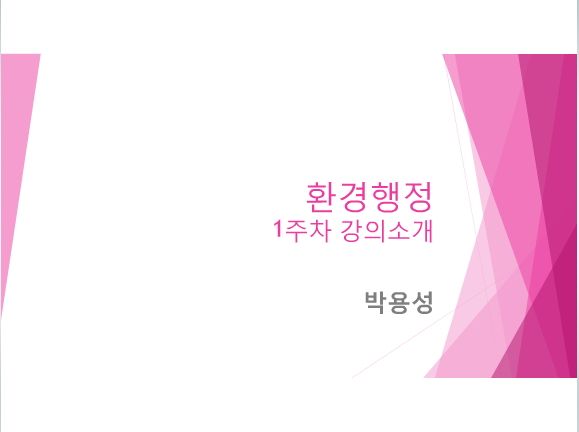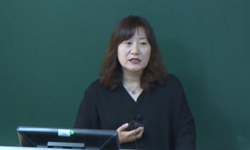Releasing captive creatures like fish, animal, birds are on of the major Buddhist traditions carrying out in most of the Buddhist temples all of the world. The beginning of releasing of captive creatures is presented in the scriptures of early Buddhis...
http://chineseinput.net/에서 pinyin(병음)방식으로 중국어를 변환할 수 있습니다.
변환된 중국어를 복사하여 사용하시면 됩니다.
- 中文 을 입력하시려면 zhongwen을 입력하시고 space를누르시면됩니다.
- 北京 을 입력하시려면 beijing을 입력하시고 space를 누르시면 됩니다.
https://www.riss.kr/link?id=A105248076
- 저자
- 발행기관
- 학술지명
- 권호사항
-
발행연도
2018
-
작성언어
-
- 주제어
-
KDC
100
-
자료형태
학술저널
- 발행기관 URL
-
수록면
117-143(27쪽)
-
KCI 피인용횟수
2
- 제공처
-
0
상세조회 -
0
다운로드
부가정보
다국어 초록 (Multilingual Abstract)
Releasing captive creatures gradually formated religious rite and procedures which was carried out in restricted area of pond, sea shore and nature. In case of the Pond for Releasing captive creatures(放生池) it was began by Master Tiantai(天台智?) which he released fishes near special seashore which was vanished in Dang dynasty along with the distinction of Tiantai order of Chinese Buddhism. The Pond for Releasing captive creatures was constructed both in China and Japan and lots of the facilities are still remain today which the pond are constructed near Temples. But the tradition was succeeded to Koryo of Korean peninsula which the Tiantai tradition was still prosperous and lasted until Chosun dynasty.
The habit of releasing captive creatures in nature result in the influxes of introduced species which ruins the balances of nature but the religious event of Releasing captive creatures conducted in restricted area like in the Pond for Releasing captive creatures may be an effective way of satisfying both the needs of Buddhist activity and preserving nature.
Releasing captive creatures like fish, animal, birds are on of the major Buddhist traditions carrying out in most of the Buddhist temples all of the world. The beginning of releasing of captive creatures is presented in the scriptures of early Buddhism and the releasing was regarded as and aggressive movement of realizing Buddhist precept of preserving sentient beings life. Releasing captive creatures are believed in resulting in the religious virtue of living long life, curing desease and come into heaven in next life so that it was pervaded in most of the Buddhist temple in the age of early Buddhist and succeeded to orders of Mahayana Buddhism. Releasing captive creatures is based on Buddhist altruism and fundamental of life and Karuna which is to relieve captive creatures both of animal, plant and ecological system of nature.
Releasing captive creatures gradually formated religious rite and procedures which was carried out in restricted area of pond, sea shore and nature. In case of the Pond for Releasing captive creatures(放生池) it was began by Master Tiantai(天台智?) which he released fishes near special seashore which was vanished in Dang dynasty along with the distinction of Tiantai order of Chinese Buddhism. The Pond for Releasing captive creatures was constructed both in China and Japan and lots of the facilities are still remain today which the pond are constructed near Temples. But the tradition was succeeded to Koryo of Korean peninsula which the Tiantai tradition was still prosperous and lasted until Chosun dynasty.
The habit of releasing captive creatures in nature result in the influxes of introduced species which ruins the balances of nature but the religious event of Releasing captive creatures conducted in restricted area like in the Pond for Releasing captive creatures may be an effective way of satisfying both the needs of Buddhist activity and preserving nature.
참고문헌 (Reference)
1 신성현, "현대사회비판과 불교생태학" 동국대학교 출판부 2006
2 Peter Harvey, "현대사회비판과 불교생태학" 동국대학교 출판부 2006
3 "천태사교의"
4 "중아함경"
5 "정법념처경"
6 "입릉가경"
7 佐藤密雄, "율장" 동국역경원 1994
8 "영조실록"
9 "열반경"
10 "아비달마품류족론"
1 신성현, "현대사회비판과 불교생태학" 동국대학교 출판부 2006
2 Peter Harvey, "현대사회비판과 불교생태학" 동국대학교 출판부 2006
3 "천태사교의"
4 "중아함경"
5 "정법념처경"
6 "입릉가경"
7 佐藤密雄, "율장" 동국역경원 1994
8 "영조실록"
9 "열반경"
10 "아비달마품류족론"
11 "신당서"
12 "성종실록"
13 목정배, "불교윤리개설" 경서원 1986
14 Keown, Damien, "불교와 생명윤리학" 불교시대사 2000
15 김종욱, "불교생태학적 생명관의 정초 모색" 한국불교학회 (38) : 181-217, 2004
16 "법구경"
17 "범망경보살계본소"
18 "범망경"
19 "대정신수대장경"
20 "당서"
21 "기유록"
22 "광홍명집"
23 "고운집"
24 "고려사절요"
25 안진호, "釋門儀範" 卍商會 1935
26 Huxley, Andrew, "The Kurudhamma: From Ethics to Statecraft" 2 : 1995
27 Williams, D.R, "Buddhism and Ecology: The Interconnection of Dharma and Deeds" Harvard University Press 1997
28 Wogihara, Unrai, "Bodhisattvabhumi : a statement of whole course of the Bodhisattva(being fifteenth section of Yogacrabhumi)" 三秀舍 1930
동일학술지(권/호) 다른 논문
-
회재 이언적의 기행(紀行)시 일고 - 「서정시(西征詩)」를 중심으로 -
- 한국사상문화학회
- 장도규 ( Jang Do-gyu )
- 2018
-
- 한국사상문화학회
- 이미숙 ( Lee Mi-sook )
- 2018
-
- 한국사상문화학회
- 방기철 ( Bang Ki-cheol )
- 2018
-
공자 교육 철학 사상의 현대적 조명 - 수사학적 관점에서 -
- 한국사상문화학회
- 심예지 ( Shim Yae Jie )
- 2018
분석정보
인용정보 인용지수 설명보기
학술지 이력
| 연월일 | 이력구분 | 이력상세 | 등재구분 |
|---|---|---|---|
| 2020 | 평가예정 | 신규평가 신청대상 (신규평가) | |
| 2019-12-01 | 평가 | 등재후보 탈락 (계속평가) | |
| 2018-01-01 | 평가 | 등재후보학술지 유지 (계속평가) |  |
| 2017-12-01 | 평가 | 등재후보로 하락 (계속평가) |  |
| 2013-01-01 | 평가 | 등재학술지 유지 (등재유지) |  |
| 2010-01-01 | 평가 | 등재 1차 FAIL (등재유지) |  |
| 2008-01-01 | 평가 | 등재학술지 유지 (등재유지) |  |
| 2005-01-01 | 평가 | 등재학술지 선정 (등재후보2차) |  |
| 2004-01-01 | 평가 | 등재후보 1차 PASS (등재후보1차) |  |
| 2003-01-01 | 평가 | 등재후보학술지 유지 () |  |
| 2001-07-01 | 평가 | 등재후보학술지 선정 (신규평가) |  |
학술지 인용정보
| 기준연도 | WOS-KCI 통합IF(2년) | KCIF(2년) | KCIF(3년) |
|---|---|---|---|
| 2016 | 0.44 | 0.44 | 0.41 |
| KCIF(4년) | KCIF(5년) | 중심성지수(3년) | 즉시성지수 |
| 0.38 | 0.38 | 0.811 | 0.06 |




 KCI
KCI KISS
KISS






